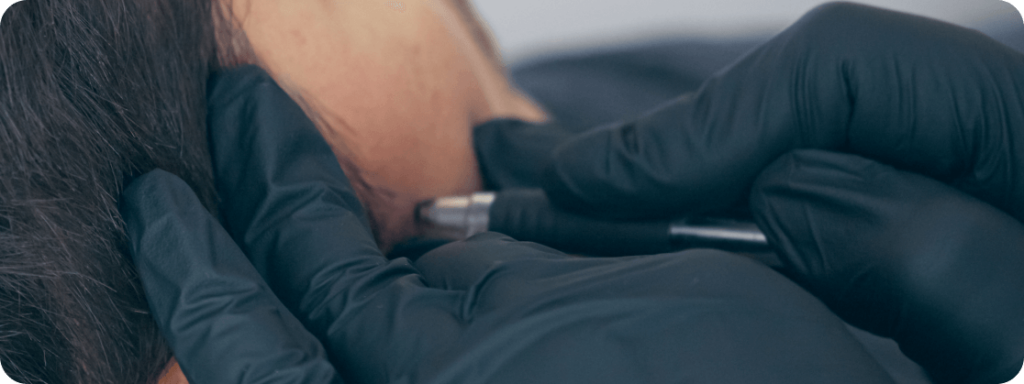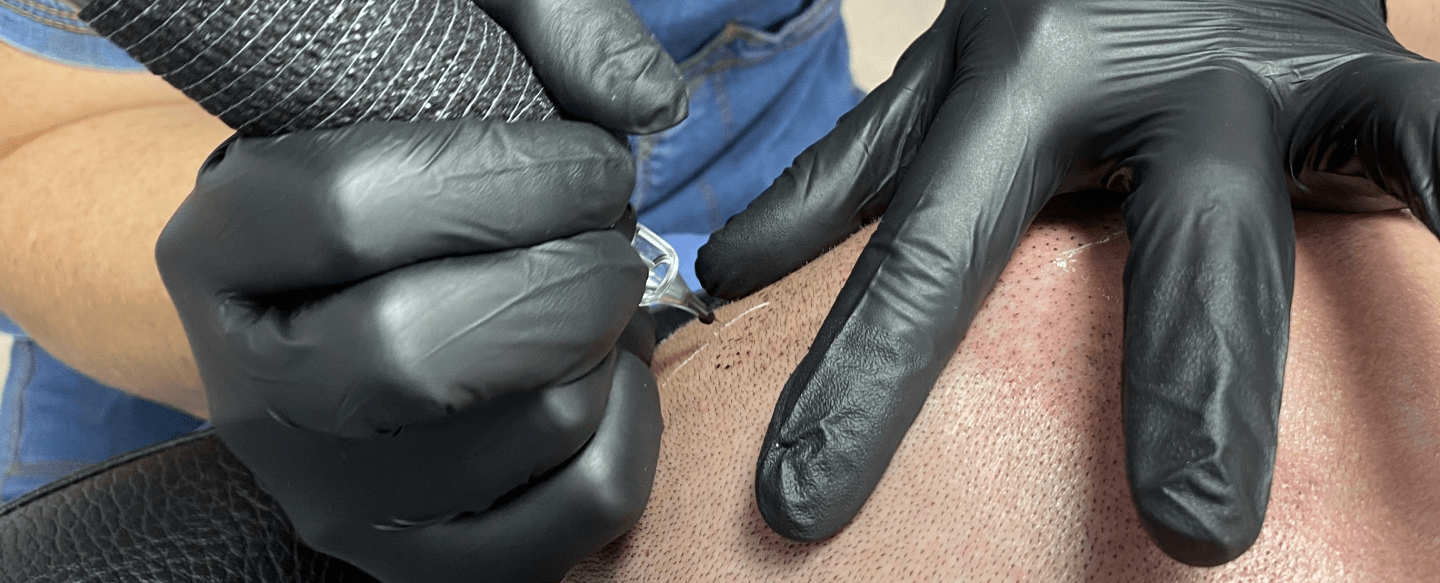Scalp Micropigmentation Procedure
For those who choose not to (or are unable to) explore hair transplants as an option, there are other techniques that can help to reduce the visual impact of hair loss. One of the most popular of these cosmetic approaches is scalp micropigmentation.
What Is Scalp Micropigmentation?
Scalp micropigmentation – sometimes referred to as SMP or a “hair tattoo” – is a non-surgical cosmetic procedure in which a narrow needle is used to distribute ink in dots of varying sizes across the affected area of the scalp. This creates a greater look of fullness in thinning areas and can even be used to create the aspect of a buzz cut on patients with complete hair loss.

How Painful Is Scalp Micropigmentation?
While similar to a tattoo, scalp micropigmentation is generally much less painful. The microneedles used in the process are much finer and thinner than traditional tattoo needles causing less trauma to the tissue. Additionally, they only pierce the upper two layers of the dermis… far shallower than a tattoo needle does. On a scale of one to ten, the discomfort rarely exceeds a 4 at the most and is usually significantly less.
How Long Does Scalp Micropigmentation Last?
A scalp micropigmentation procedure uses different pigments than traditional tattooing. These permanent inks resist fading and changes in tone. Even though they are resistant, fading does occur, and touch-ups may be required roughly every one to four years.
The difference lies in the ink’s composition. Unlike tattoo ink, the inks used in SMP will not separate into blues and greens over time as they are not made from composite sources. These cosmetic pigments are specifically designed to prevent this sort of discoloration and spread differently underneath the skin.
In addition, since the pigments used in SMP are classified as cosmetics, they actually fall under the aegis of FDA regulation, unlike tattoo inks.


